The history of fragrance is an interesting one. Walking through it, as I did with Floris perfumer Nicola Pozzani recently, shows how subjective many of associations with smell.
(You can read the full post about my bespoke fragrance consultation at Floris here.)
Although fragrance was originally used in the way we use it today – to make us smell nice – it was also used as a restorative, and as a medical aid. The refreshing smell of citrus or florals was a pick-me-up, to be splashed on at regular intervals during the day, in much the same way as we use soap or moisturiser after washing our hands.
Strong scents were used to wake people when they fainted, and were drunk as treatments for all manner of illnesses. ‘Cologne’ water would be drunk as often as splashed on – in both cases with the aim of enlivening the senses.
This was one reason light smells were so widely used. They were meant to evaporate quickly, to have an immediate effect rather than hang around all day.
When you start thinking about fragrance in these broad terms, it makes complete sense that an old house like Santa Maria Novella in Florence has bottled perfume as just one section amidst soaps, candles, creams, pot pourri, teas, liqueurs and so on. They are all just ways of applying scent to our senses.
Fragrance was first dissolved in alcohol by the monks of Santa Maria Novella in the 17th century. Previously it had been held in oils, which were less pleasant and more expensive.
The vast majority of fragrances were floral – understandable, given they were both pleasant and abundant. They make up one of the four or five fragrance families often referred to in perfume, the others being colognes, woods, orientals, and fougeres.
Each one emerged at a different point in history when a particular fragrance became wildly popular. It led to a vast range of spin-offs and copycats, and was often spurred by a scientific advancement.
Colognes became popular at the turn of the 18th century, when Giovanni Maria Farina managed to create a complex yet consistent combination of essences in his Eau de Cologne – using lemon, orange, neroli (orange blossom) and bergamot (a type of orange).
All fragrances were florals or colognes until the end of the nineteenth century, when Fougere Royale burst onto the scene. This was spurred by the discovery of a technique to isolate molecules out of raw materials, vastly expanding the potential of perfumery.
“It means you can be much more precise with your creations,” says Nicola. “In a fragrance I recently created for Floris, for example, I took a very light fraction from jasmine from among 200 or so molecules. You wouldn’t use most of them, but the isolation gives you much more control.”
Fougere itself isolated coumarin, a molecule found in tonka beans, and its sweet smell made it wildly popular around Europe. It is also the basis for many famous ‘male’ fragrances – Brut, Boss, Cool Water etc.
Interestingly, all fragrances were seen as unisex until the 1960s, when the beauty industry started heavily promoting scents for one sex or the other. Until then, men and women simply wore scents they liked. Which makes me feel better about my love of lavender.
The next trend was woody fragrances, started by the scent Chypre (French for Cyprus) in 1917. It used oak moss at its heart, and was distinguished by the contrast between that and citrusy top notes. Musk and patchouli are often used in chypre scents as well.
The 1920s saw the growth or ‘oriental’ fragrances – the last major family. They were driven by a very western idea of the orient – sensuous and warm, usually around an extract of vanilla. Ouds, which have become very popular in recent years thanks to Tom Ford, are also orientals.
In the past 50 years, perfume has gone through several trends. They often last 10-20 years – the 1980s were all about musk, patchouli and other heavy scents, while the 1990s were dominated by an ingredient called ‘marine’, which was the first successful attempt to make fresh smells without using citrus.
This last ingredient was a real eye-opener to me. As soon as you smell a ‘marine’ fragrance it takes you back to the 1990s, even though you wouldn’t say they had a defining smell. It smells of shower gel, of all Calvin Klein scents, of Acqua di Gio (there were a lot of things with ‘water’ in the title – a cleansing reaction to the heavy 80s).
There are a lot of heavier fragrances around at the moment, like the ouds, tobaccos and ambers (actually from ambergris, nothing to do with the stone), partly driven by big-spending markets like Russia and the Middle East.
“Oud has been used in the Middle East for centuries,” says Nicola (who lived in Saudi Arabia for a while). “It’s very much part of religious and cultural rituals – there are even sections of the Koran prescribing when certain scents should be used.”
The relationship between fragrance and culture is a fascinating one. The contrast, for example, between Japan and China that don’t have much of a fragrance culture, tending to focus on cleanliness, and the sense-heavy, incense-drenched catholic countries of Europe. But perhaps another time.
As mentioned on Monday’s bespoke post, it’s a heady world and one I’d highly recommend getting lost in with Nicola and the Floris team.
All photography from Floris perfumers, Jermyn Street. By Jamie Ferguson @jkf_man


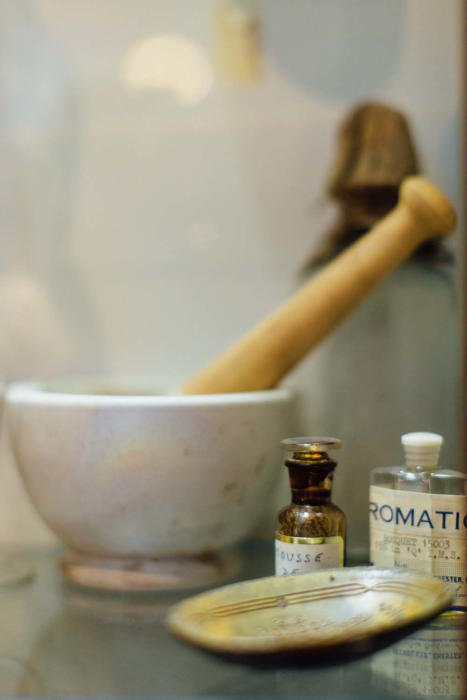
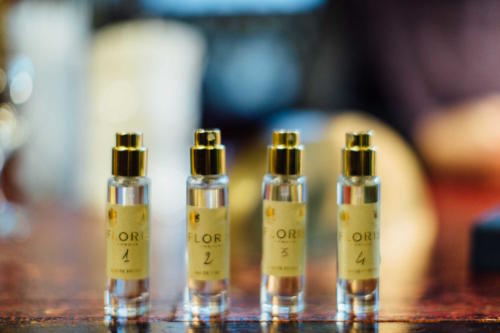
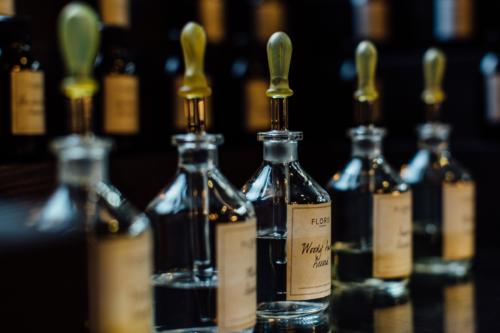
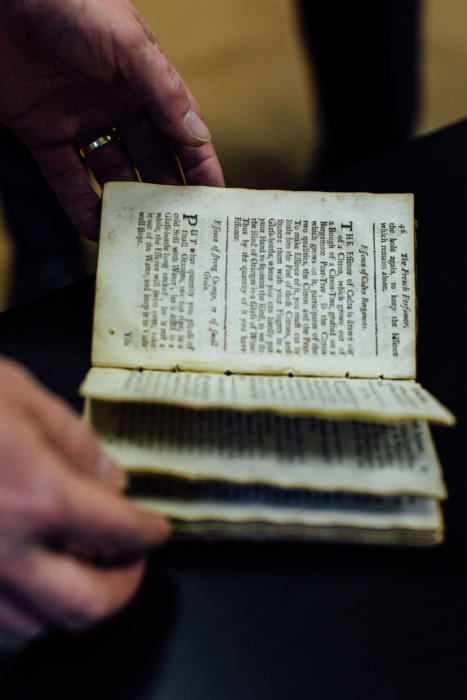
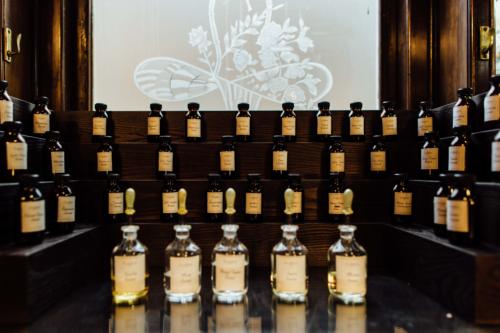
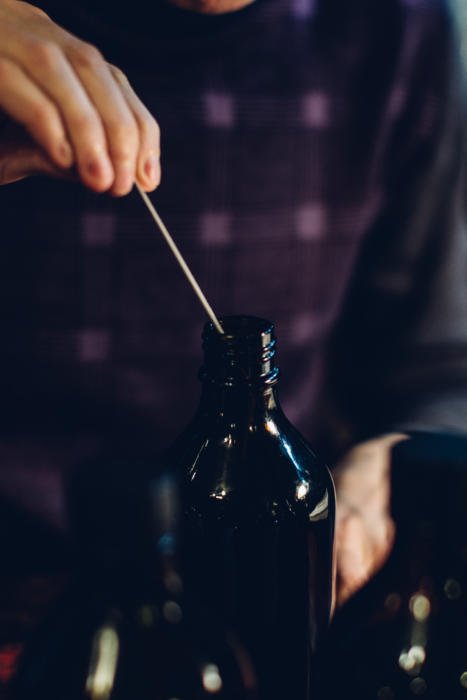


























Interesting that you mention Asia. There is a very strong incense culture in many countries of south-east Asia, including Japan, China and India (just think of buddhist and hindu temples with all the smoke wafting through the air). It’s also common to use incense to scent your home. A few years ago, I was fortunate to visit the main shop of Shoyeido, a 300 year old incense company in Kyoto. That was a real eye-opener, with a huge range of different kinds of incense (and budgets!), and was my first step down the rabbit hole of scents.
Thanks Gustaf. I’m told the attitude to fragrance is very different by those in the industry out there, certainly when it comes to personal scent, but I agree my experience from travelling in India, China and Japan is of incense and other scents being very involved with religious ceremonies
You may know this already, but Kódó is very interesting. Essentially Kódó is a japanese ceremony in which wood chips are burned for odour. It’s not religious, and some of the most famous, for the lack of a better translation, “pieces of wood” go back over a thousand years in documented history. Now, every couple of centuries somebody will chip off a little piece and burn it (no really, google “Ranjyatai”).
Interestingly Kódó is about the “production” of smell from wood you burn yourself according to sets of byzantine and highly complex rules whereas Western perfume comes fully produced which you simply use. It’s a fascinating difference.
That is, thank you
There’s a memorable scene in Moby Dick around harvesting Amber.
Interesting read Simon. Looking at the mainstream fragrances in the market, my view was that these can be mostly grouped in two base scents, either wood or musk. For instance, oud is also a wood.
Thanks. There are a lot out there with few woods and no musk, particularly the lighter scents such as colognes
Simon, nice article: the world of perfumerie is intriguing and deserves more attention. One comment: Giovanni Maria Farina (ad the name tells) was Italian, a merchant of perfumes who among others moved to Northern Europe to sell perfumes.
Of course. Thanks
Hi Simon! such a nice article.
I have a few questions if you don’t mind.
what did you mean by “Fougere itself isolated coumarin”?
can you explain? i’m really confused.
The fragrance, Fougere, made use of a process where that particular molecule, coumarin, was isolated from other molecules and used in the scent
There are a few misconceptions/mistakes in this article. First, the Chypre ‘accord’ is one of bergamot, labdanum and oakmoss – you can’t have the Chypre accord without labdanum, which brings me to my second point; that the ‘amber’ accord is in fact a fantasy note, and is usually created using labdanum, benzoin and vanilla. When people refer to amber fragrances, or ‘amber orientals,’ they are referring to this accord. Ambergris, which is an animalic note, may or may not be used in oriental perfumes (the fragrance family, not the origin), but has nothing really to do with the amber accord. Oud fragrances are a contemporary phenomena, and the note is not found in early European perfumery. Fragrances marketed toward men began before the 1960s (Fougere Royale (1882), Knize Ten (1924), Caron Pour Un Homme (1934), Jacques Fath Green Water (1946), Rochas Moustache (1949)), though I think you’re right in that the quantity and emphasis started revving up in the 1960s. Lastly, there is a difference between functional smell (soap, lotion, detergent, toiler cleaner, etc.) and absract perfumery. The main reason Fougere Royale (followed by Guerlain Jicky) is so important in the history of perfume is it was one of the first to forgo the idea of creating a perfume that mimicked nature, and created something new all together. This is why synthetics were the single largest contributor to the art of perfume in the 20th century.